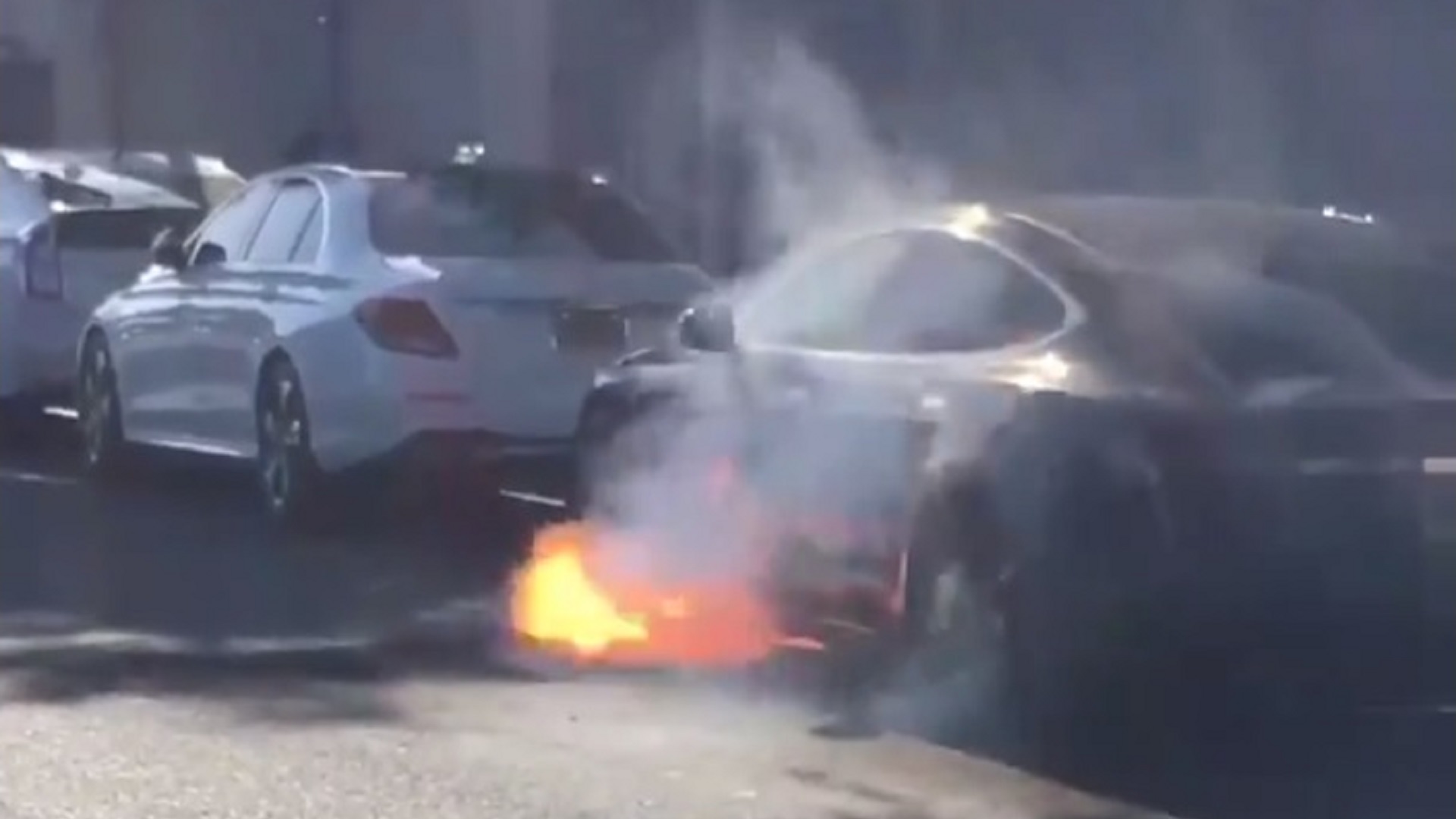

Why are Teslas catching fire? It’s a question we’ve asked Tesla repeatedly only to be met with the same answer: We’re looking into it, and by the way, gas cars catch fire too. Then, silence.
There are over 270 million cars on the road in the United States, and the vast majority of them run on gasoline. It’s flammable, sure, but the fact that an equivalent majority of vehicle fires involve gas-powered cars is also a function of their monopoly. So it’s worth taking a step back and looking at how in recent months, with over half a million Teslas on the road at this point, the number of spontaneous fires involving the Model 3, S, and X seems to be increasing.
Tesla says there’s no reason for concern, but it still pushed a “precautionary” over-the-air update to its Model X and Model S fleet to improve thermal management in the wake of one fire earlier this year. Then another stationary Model S caught fire. And a recall doesn’t appear to be coming either, even as Audi makes a cautious and potentially sale-killing move to recall its new E-Tron SUV over a potential fire issue just months after its release.
As the frequency and details often get lost in the days, weeks, and months between incidents, The Drive has put together a timeline of each occurrence, as well as location, model, and whether or not it was charging at the time of combustion in an effort to better see the bigger picture.
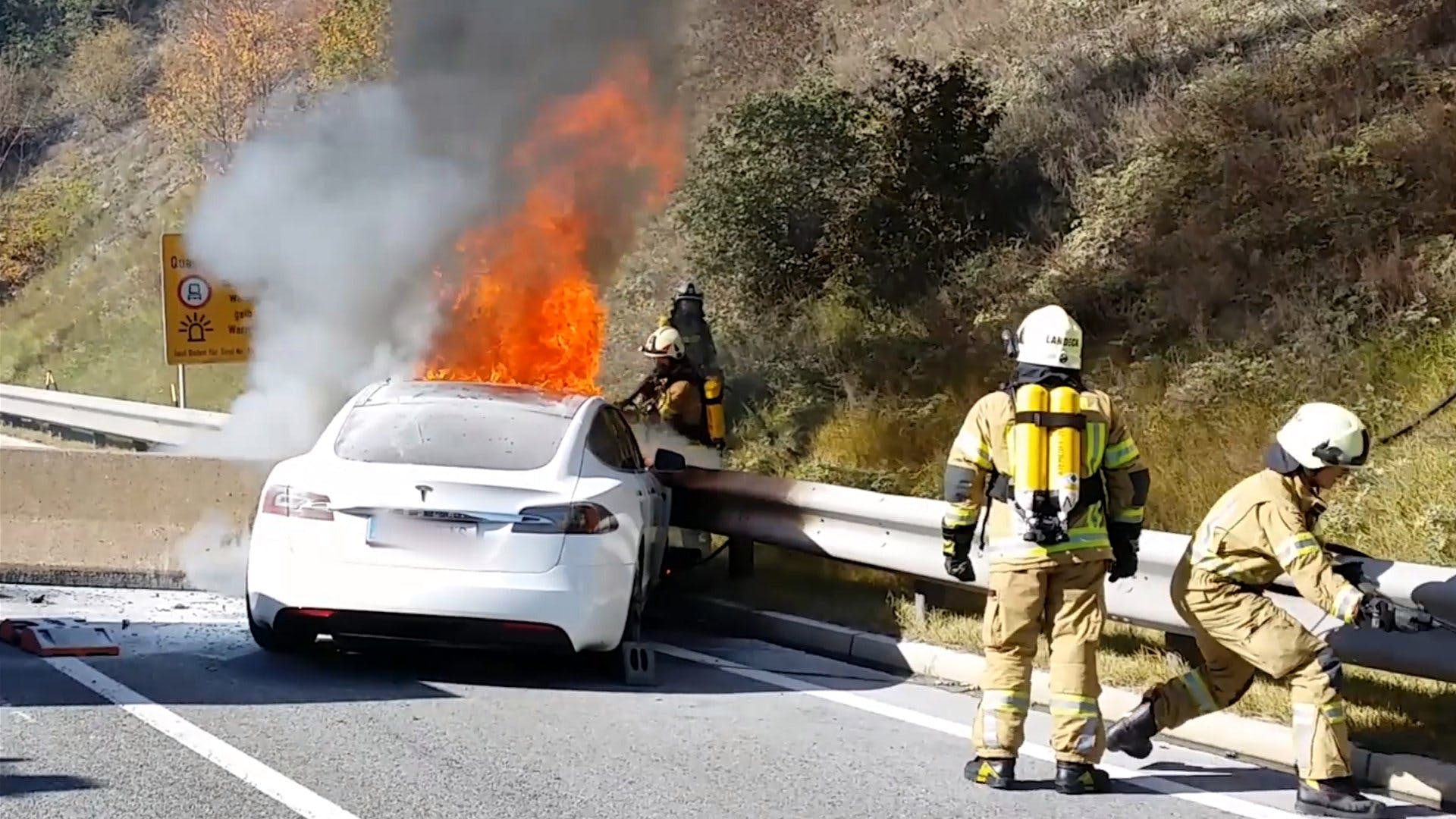
June 1, 2019
- Location: Antwerp, Belgium
- Vehicle: Model S
- Status: Charging
This newest incident occurred at a hotel in Belgium, and according to reports the Model S was plugged into a Supercharger station at the time of combustion. The owner of the Tesla said he parked the car, began charging it via the Supercharger and went for a short walk. When the driver returned, the car and Supercharger were in flames. According to HLN, a local news outlet in Belgium, responding firefighters took extraordinary measures to ensure that the fire was doused, dropping the burning Tesla into a large water-filled container and leaving it there overnight.
May 13, 2019
- Location: Hong Kong
- Vehicle: Model S
- Status: Parked
Reports say that the Model S had been parked in a public garage before the owner walked into a nearby mall. Security footage showed smoke start billowing from the Model S before it was engulfed in flames. This is the incident that prompted Tesla to put out that OTA update to better control the thermal management system in the Model S and Model X.
May 3, 2019
- Location: San Francisco, California
- Vehicle: Model S
- Status: Parked
At around midnight Pacific Time, the San Francisco Fire Department responded to a car fire and discovered a Tesla Model S on fire and emitting dark smoke in a residential garage. The crew quickly doused the flames and removed the car from the garage to avert a structure fire. According to the fire crew, the Model S was not plugged in at the time.
April 21, 2019
- Location: Shanghai, China
- Vehicle: Model S
- Status: Parked
In a similar situation to the one in Hong Kong, this doomed Model S met its demise in a public parking garage. Security camera footage showed white smoke emanating from beneath the Tesla before it quickly turned massive fireball that consumed the Tesla Model S and an adjacent Audi A6. The car was turned off and not plugged in at the time.
February 8, 2019 | April 17, 2019
- Location: Pittsburgh, Pennsylvania
- Vehicle: Model X
- Status: Plugged in Garage, Then Being Transported
A two-parter: Originally, the Model X was involved in a residential garage fire that claimed it and another vehicle and resulted in smoke damage to the home way back in February. In April, the Model X was being moved via flatbed to a local garage for inspection by fire authorities when it suddenly erupted into flames and burned for several hours. The car had supposedly been inspected by a Tesla technician who deemed it safe for transport. It’s suspected that the Tesla was also the source of the original garage fire.
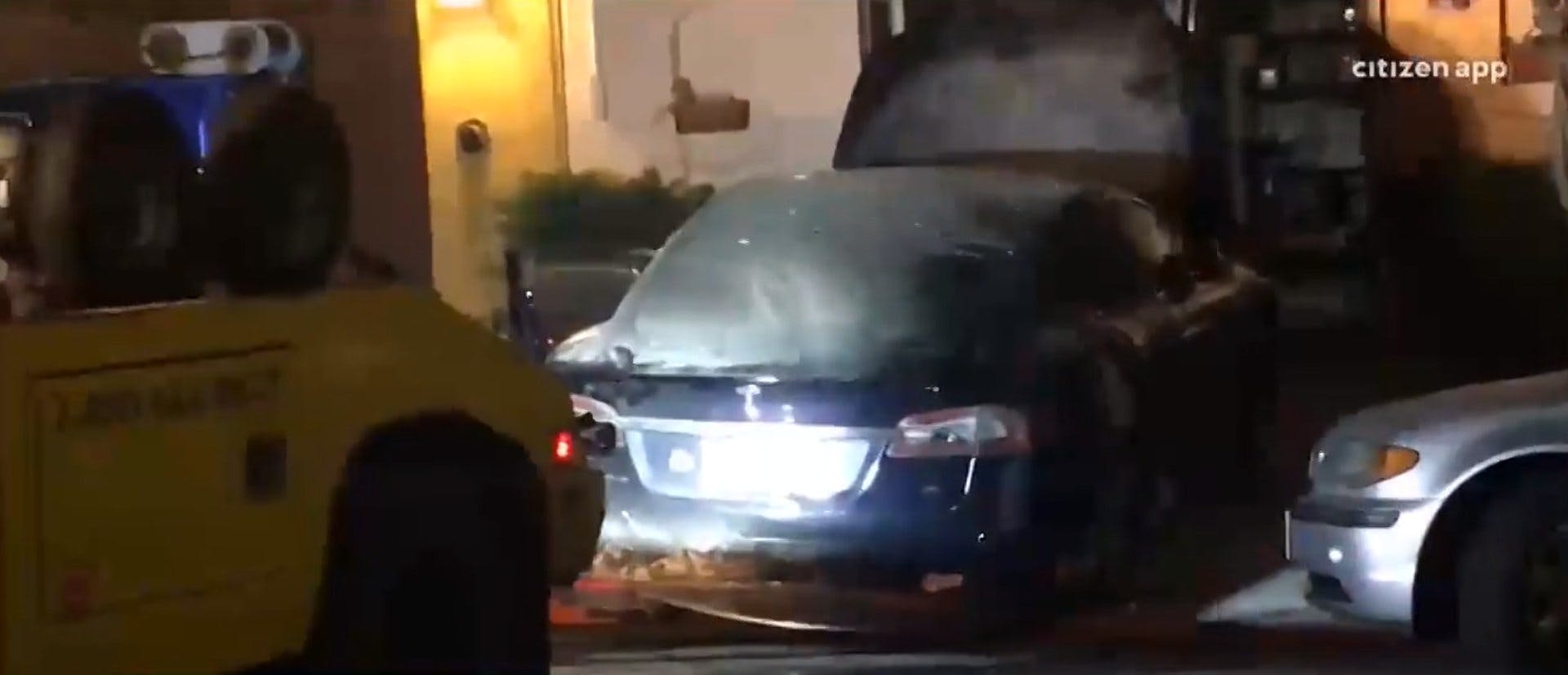
December 21, 2018
- Location: San Francisco, California
- Vehicle: Model S
- Status: Parked
The December incident reportedly saw the owner of the Model S witness a sudden drop in tire pressure. Erring on the side of caution, they pulled into an auto repair garage. Moments after parking the car, the Model S burst into flames without ever being touched by a mechanic or the owner. Fire crews responded quickly and doused the fire. However, a few hours later, the car was once again engulfed in flames as the damage to the battery cells jumped to the successive packs.
June 18, 2018
- Location: Los Angeles, California, United States
- Vehicle: Model S
- Status: Stopped in Traffic
West Wing actress Mary McCormack tweeted a dramatic tale about her husband’s Model S erupting into flames in the middle of Santa Monica Boulevard in Los Angeles last summer. “No accident, out of the blue, in traffic on Santa Monica Blvd,” said McCormack in a social media post following the fire. Onlookers caught the fire on video and it depicts flames shooting out from underneath the Model S and licking up the driver’s side of the car.
June 18, 2016
- Location: Oslo, Norway
- Vehicle: Model S
- Status: Charging
The first reported stationary Tesla fire occurred in 2016 in Norway. Like the most recent incident in Belgium, the driver of the Tesla Model S hooked up the car to one of the company’s Superchargers in Oslo. A short while later, both the Supercharger and Model S went up in flames. Fire crews used foam to control the blaze as they were unsure if water would be effective.
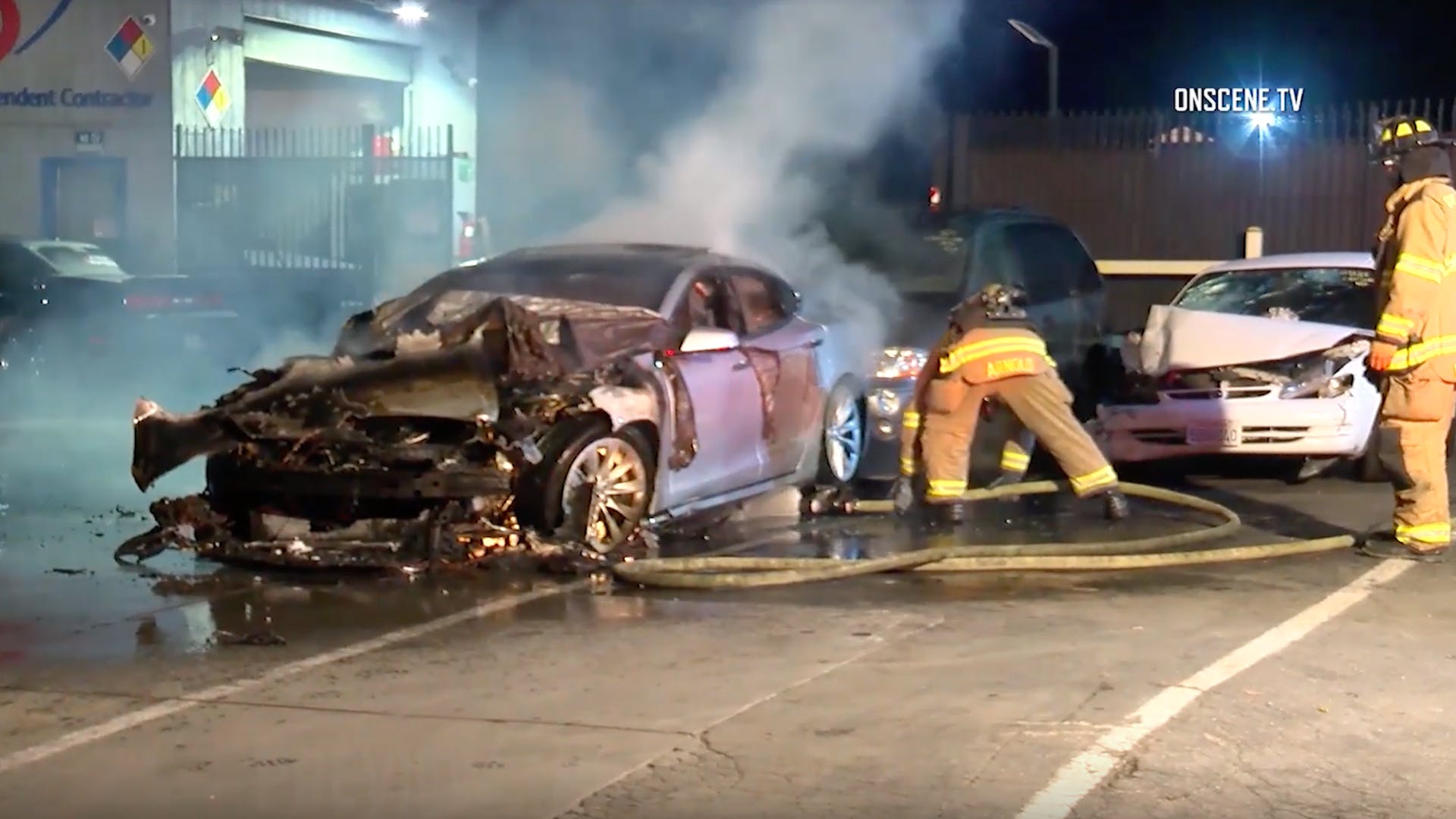
So that’s at least 8 Teslas spontaneously combusting with no apparent accident damage. These represent incidents that The Drive can confirm. There are likely others that haven’t yet been attributed or widely reported on. As for the cause? Here’s that boilerplate answer.
“We currently have well over half a million vehicles on the road, which is more than double the number that we had at the beginning of last year, and Tesla’s team of experts uses that data to thoroughly investigate incidents that occur and understand the root cause,” a Tesla spokesperson told The Drive. “Based on our research, we know that there are many external factors that can cause a fire to occur, including building fires, vehicle damage, improper maintenance by unauthorized mechanics, aftermarket modifications and improper vehicle charging.”
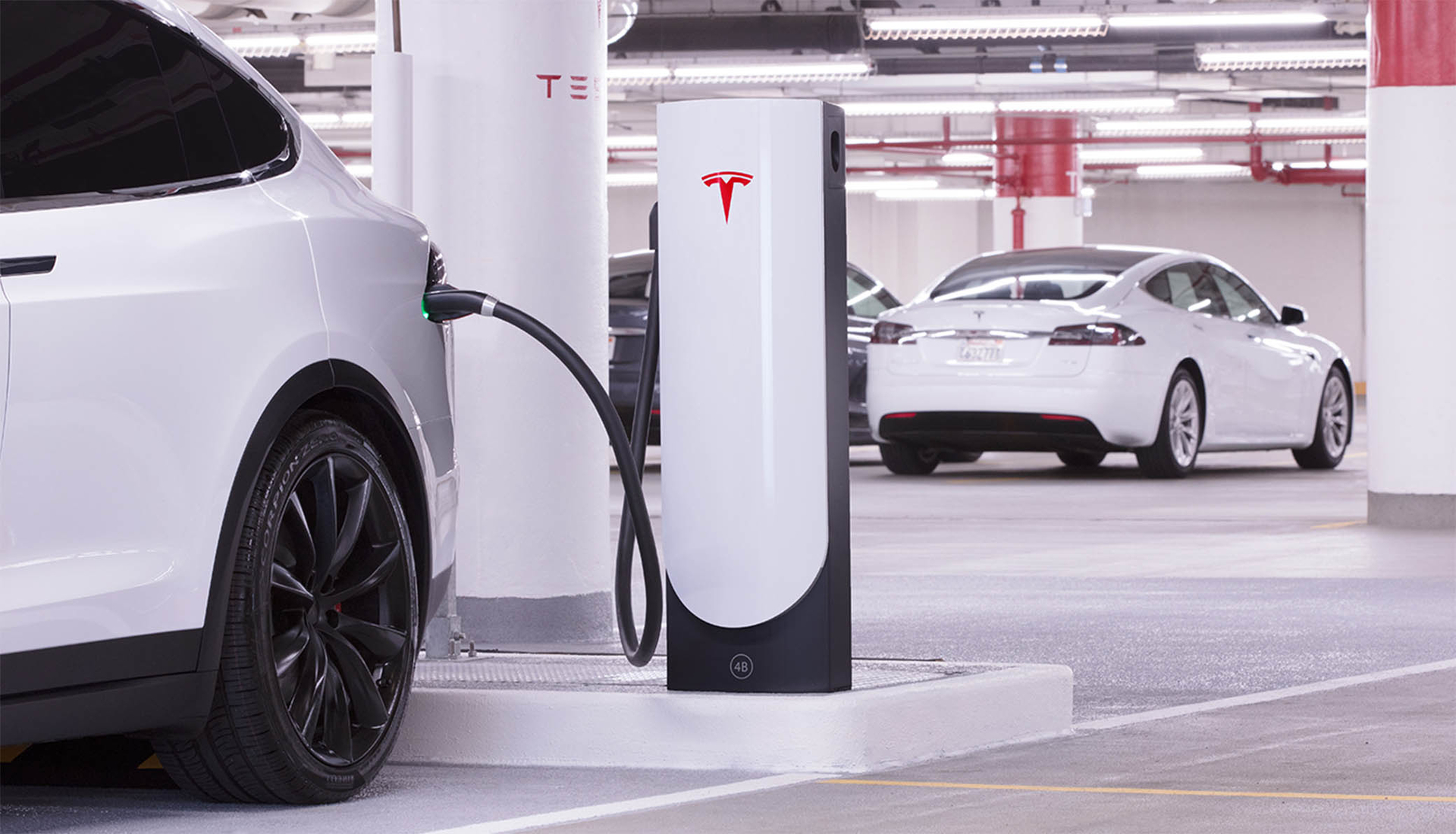
One theory on the culprit resides in the lithium-ion battery cells that power each and every Tesla. Each Tesla battery pack is made up of thousands of these cells, and as an engineer on this Reddit thread surrounding one of the Model S fires pointed out, it has a known failure point.
“Lithium batteries can develop internal shorts spontaneously. It’s a known failure mode. Depending on whether you overcharge, undercharge or overheat (which changes the threshold for what over or undercharging to a smaller envelope of operation), the battery can form ‘lithium dendrites’ or ‘copper dendrites’ which create dead shorts between the cathode and anode internally,” he writes. “It’s inherent to the battery chemistry of all lithium battery types. This is why you have to both design the charge/discharge circuitry very carefully and you also have to have extreme reliability and variance planned into the design, manufacturing and operation. It’s one of those lovely, high energy failure mode features you get from a system that has a hand grenade’s energy density multiplied by >100x.”
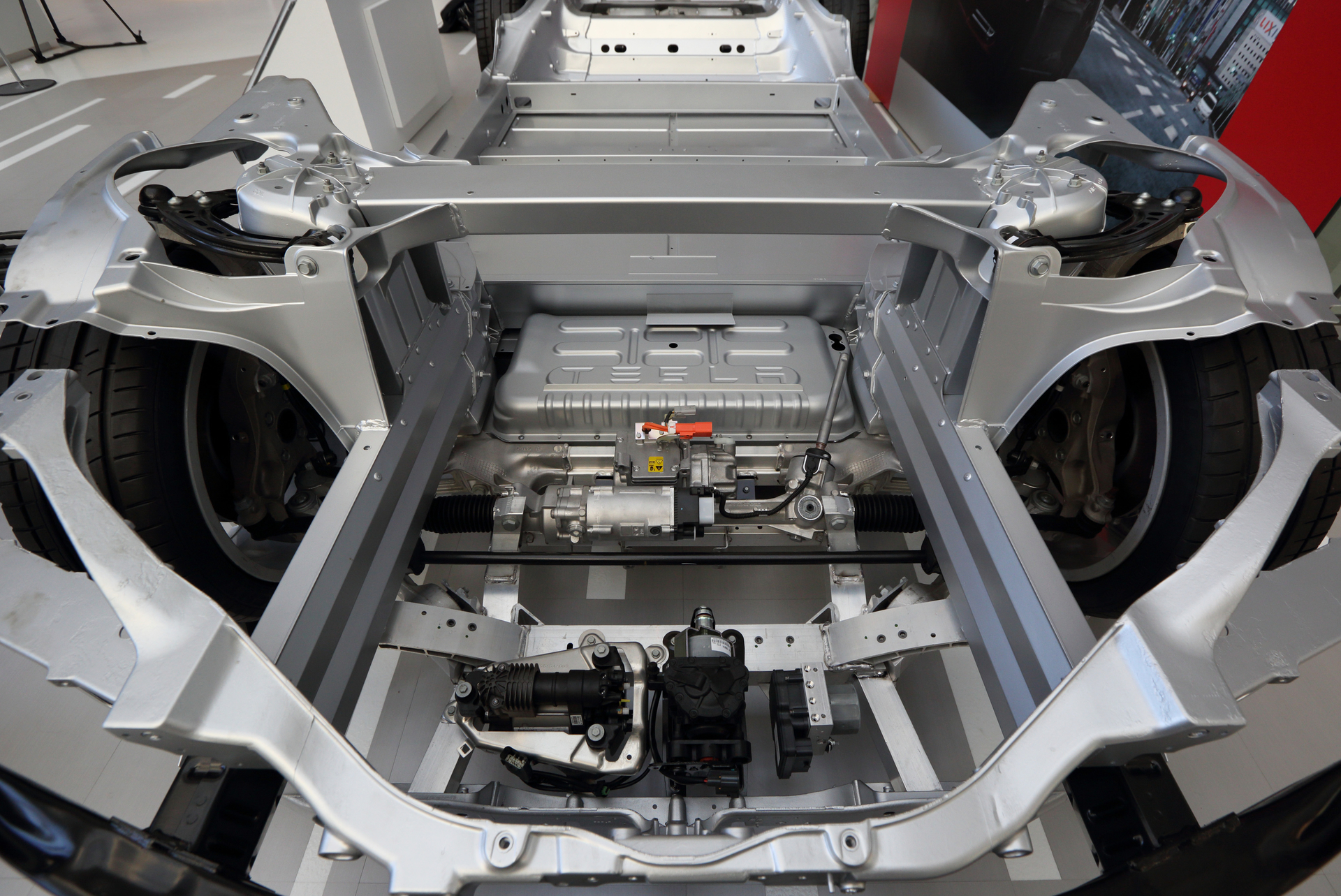
This could be the case with Tesla. Lithium-ion fires, however, aren’t limited to Teslas. Smaller household lithium-ion batteries, laptop lithium-ion battery packs, cellphone lithium-ion batteries, and even e-cigarettes have all had explosive episodes. In addition to the dendrite problems, manufacturing issues can be to blame as well. The Atlantic recently spoke with an attorney who’s taken on a handful of lithium-battery lawsuit cases and believes that the country is being flooded by “…a ton of batteries manufactured in China that are terribly made, completely unsafe… [and] rushed to be placed on the market.”
“Rushed to market” is a common phrase that hangs like an albatross on Tesla as it struggles to make a profit. We saw it in the use of non-automotive-grade materials that resulted in infotainment screens melting in the summer heat; a more germane case might be Tesla’s inability to foresee objects penetrating its battery packs in a crash. In 2014, after two high-profile accidents in which Tesla battery packs were ruptured and caught fire, the National Highway Traffic Safety Administration opened an investigation into the issue. Though no recall was issued, Tesla added a titanium underbody shield to further protect the battery.
“Fire incidents involving Tesla vehicles are already extremely rare and our cars are significantly less likely to experience a fire than a gas car, however, we believe the right number of incidents to aspire to is zero,” the spokesman told us. They added that Tesla has not “received any information to indicate that this fire [in Belgium] was a result of any issues with the battery.”
However, given Tesla’s reticence to disclose what caused fires in the past—as well as issue recalls—it’s unclear if the public is in any danger or if there’s a manufacturing issue that could be solved. In a similar situation, BMW was forced to recall thousands of cars and SUVs after an ABC investigation found more than 40 incidents of spontaneous and stationary fires. There’s a big difference between eight and 40—but that gap is shrinking as the year goes on.